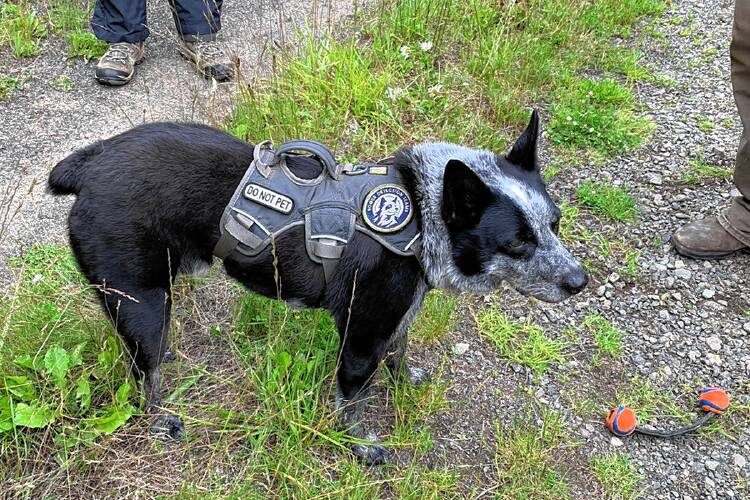 Our companion animals continue to amaze us with their abilities, and in the ways in which they improve our lives. “Conservation dogs” are a great, and unique, example. Dogs have a long history of assisting people in tracking things us humans can’t easily see or smell. This can range from explosives to disaster survivors, but in the case of conservation dogs, they are usually searching for “nature-related” odors, such as specific animals, scat, rare plants or invasive weeds.
Our companion animals continue to amaze us with their abilities, and in the ways in which they improve our lives. “Conservation dogs” are a great, and unique, example. Dogs have a long history of assisting people in tracking things us humans can’t easily see or smell. This can range from explosives to disaster survivors, but in the case of conservation dogs, they are usually searching for “nature-related” odors, such as specific animals, scat, rare plants or invasive weeds.
These highly trained canines work alongside biologists, who are seeking to learn more about a specific animal or plant. Often these scientists are trying to find out if a species is threatened, endangered, or sometimes still around at all! In the case of tracking scat (ie. poop), this substance can indicate how populous a species is in an area, and how healthy they are.
Fortunately, many of these dogs are rescued from animal shelters and trained by organizations that will put them to use helping (and care for them too!). Conservation dogs don’t need to be a specific breed or even a certain size. The main requirement, as cited by trainers, is that they have “a high ball drive.” They also need to be quick learners, since training is usually measured in months, not years, as with other working dogs.
Trainers look for dogs that have high energy and are obsessed with playing fetch. The handlers connect finding the particular scent, with the reward of a ball, and the dog does the rest. The desire to work for that ball, is the driving force for these dogs. They will cover a lot of ground in their work, endure harsh environments and use their incredible nose to sniff out their target. Often these targets remain undetected by their human companions, until they are right on top of them!
These dogs are said to be twice as good as finding scat on roads as humans, and seven times as good in vegetation, where it’s mainly found. They are trained to look for specific types of scat, or plants, and they know to “lay down” when they find their prize – without touching it.
A recent application of these conservation dogs is in the detection of PCBs. These substances, which were widely used up until 1979, can be found all across the US. When PCBs find their way into the ground (soil or water) they can end up in our food chain (and into us!). Studies show they may cause cancer, reproduction problems and even suppress the immune system, so it’s important to find and get rid of them. Amazingly, the dogs have been successfully trained to detect PCBs, which to humans are invisible and have no known smell.
As with many working dogs, conservation dogs live and work with their trainers, where strong bonds are formed. Once the dogs are too old for the rigors of work, they get to retire with their trainer, as a member of the family. Clearly another impressive example of dogs helping us, in an unexpected way!
